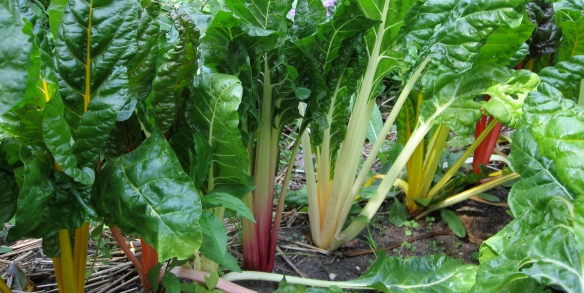chard [Beta vulgaris var. vulgaris] does best in a bed high in organic matter.
distribute a thick layer (5 cm/2” or more) of ripe compost over the garden bed in early spring well before sowing the chard. remove germinating weeds by raking the bed every week or so.
chard seeds do not like cold and damp soil. start sowing when the soil has reached a minimum of 10°C (50F). in berlin this is usually the case in the middle of april.
seeds planted out in cold soil will be germinating later than the ones planted out a couple of weeks later when the soil has warmed up enough.
place the seeds 3cm(1”) deep in the soil and space the rows 30 cm (12”) apart.
once the chard has germinated and grown a couple of inches it needs to be thinned out to about 20cm (7”). if there is not enough space the plants stay small, develop only thin stems and are more susceptible to mildew.
depending on the amount of slugs I mulch the chard only very lightly or not at all until the thinning stage. instead I earth the plants up once by drawing the soil from in-between the rows (work very carefully and shallow) toward the stems of the chard. at the end the green parts of the plants stick out of a mound of soil that covers part of the stems. this procedure disturbs germinating weeds and gives the plants a better stance.
once the chard has established it appreciates a layer of straw mulch to keep the ground moist. additionally to the compost I fertilise the chard with nettle tea or nettle – comfrey tea (1part tea-10parts water) two or three times in may and june.
 good companion plants are bush beans, cabbage and relatives, carrots, radishes, beetroots and onion. do not plant next to or after spinach.
good companion plants are bush beans, cabbage and relatives, carrots, radishes, beetroots and onion. do not plant next to or after spinach.
start harvesting chard after 2months by only removing a few leaves (including stems) per plant at a time, leaving the heart of the plant intact. chard can be harvested until the first frost in autumn.



